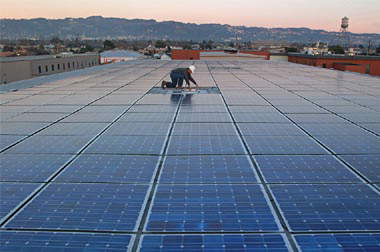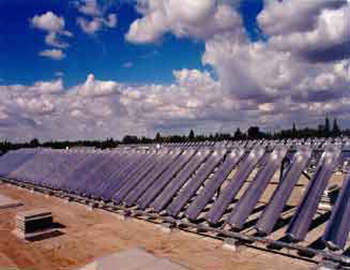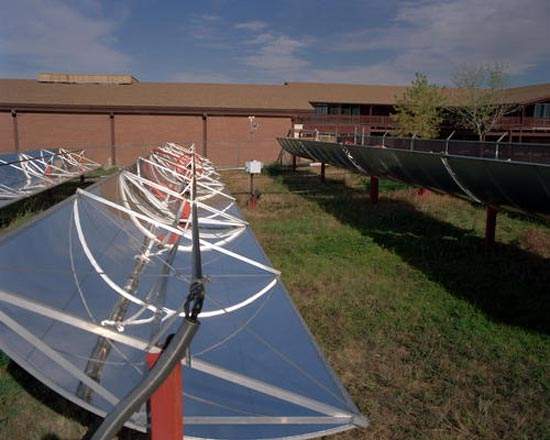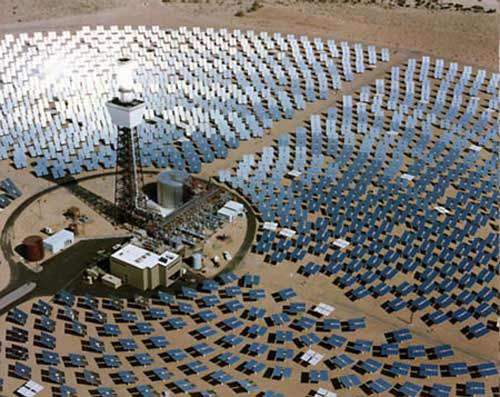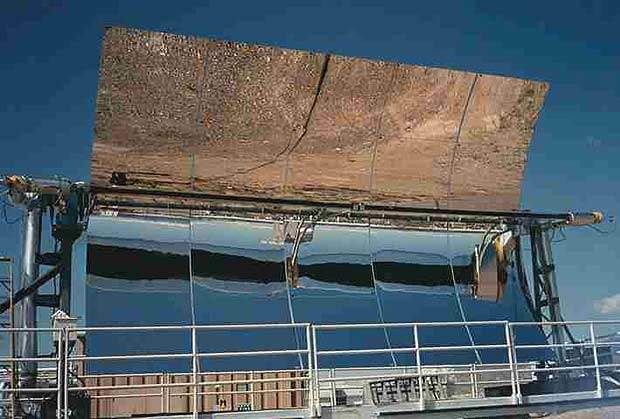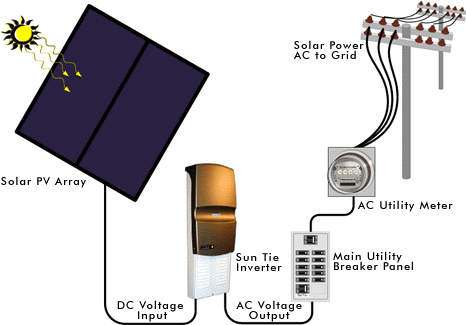Two solar projects in San Francisco, USA, will provide electricity for 60,000 homes in the area. The overall plant will become the world’s largest solar facility and will feed power directly into the San Francisco network. The first part of the huge project is already complete, with 675kW having been installed on the Moscone Convention Centre.
In 2001, two proposals to install renewable energy systems in San Francisco were ratified. Construction of a 50MW solar power facility has begun, with 140 to 250 acres of photovoltaic panels being installed on commercial, residential and government rooftops. Another 10MW to 12MW of solar power will come from an agreement linked to 30MW of wind power, costing $100 million. This involves photovoltaic panels being fixed to city facilities and buildings.
The plans will cut greenhouse emissions from the area by around 1%, and provide 10% of the city’s electricity in the daytime and 5% at night (peak load). The ‘peaker’ plant will be designed, built, operated, maintained and transferred by Local Power through an agreement with California Power Authority.
SOLAR TECHNOLOGY
Since solar technology utilizes much of the same equipment and technologies as conventional power plants it can be easily integrated into the existing grid. Electricity can be used during peak (evening) hours by collecting the energy during daylight hours and storing it in hot molten salt.
Solar power will be concentrated at San Francisco in three ways:
Dish / engine systems collect and concentrate the sun’s energy using a dish-shaped surface and a receiver which transfers the energy to the engine’s working fluid. The fluid is compressed when cold and reheated and expanded through a turbine into the generator. Dish / engine systems are not yet commercially available, but will be particularly useful in built-up regions such as San Francisco, where dishes can work together to increase energy generation.
With power tower systems, a field of hundreds of mirrors or ‘heliostats’ direct the sun’s energy to a receiver, which heats molten salt to produce heat energy. The ‘cold’ 550°F salt is pumped into a ‘hot’ 1,050°F tank for storage and is then used to generate power in a steam generator. The benefit of this method is in thermal storage which reduces the load on back-up fuel sources.
In trough systems, energy is directed into trough-shaped reflectors to an oil-filled receiver pipe that runs along the inside. The heated oil then goes on to generate power in a traditional steam generator. Individual trough systems can generate about 80MW of electricity. As in the power tower system, thermal storage can be used for peak use, and the trough system is often used with a fossil fuel plant to supplement solar output.
COST REDUCTION
One of the commonest criticisms of solar power is that capital costs are comparatively high. To combat this, San Francisco has introduced a large-scale aggregate performance contract with businesses, government buildings and resident’s homes to promote the rollout of new solar panels and subsidize costs. According to state law, solar power installments on governmental buildings can be taxed up to 50% more than private residences. The new proposition suggests that renewable energy and conservation facilities can be installed on government properties, but with the aggregate contracts resulting in lower prices for both.
As residents, businesses and the state will be buying the electricity together, the price per-unit is reduced, and Local Power can ensure cost-effectiveness. The payment packages have also been changed to improve system purchase, lease, power purchase or sharing.
GRID NETWORK
The network of small local power sources will be used across the city to provide electricity where needed. As it can be fed directly into the power grid, the renewable energy can benefit homes and businesses across the region.
This will also solve problems of power delivery during power line disturbance. As San Francisco is on a peninsula there have been significant problems in the past, because when one sub-station has a failure there are no back-up transmission lines. Introducing solar power would mean that there would be a local source of energy to reduce reliance on the transmission lines and external power plants.
A new 400MW transmission line is being built by PG&E at a cost of $110 million. This is due for completion in 2005, although the city will still require a stable local energy source.
THE FUTURE OF SOLAR POWER IN THE USA
Covering 9% of Nevada with parabolic trough systems could generate enough electrical power for the whole of the USA. The global market for photovoltaic technology is around $1.5 billion, and the US Department of Energy plans to have one million homes with solar roofs by 2010. By 2020, the photovoltaic industry expects to employ over 150,000 people.

